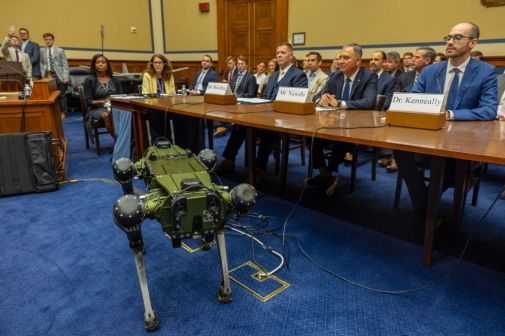It’s been a bad week for the U.S. withdrawal in Afghanistan.
The military was found spending nearly $800 million on aircraft that might just sit dormant on Afghan runways. News broke that the Afghan government is overcharging contractors even more than “just” the $1 billion it was originally thought. And insurgent violence against Afghan police hit perhaps its highest point in 12 years during the month of June. According to an Afghan Interior Ministry spokesperson, 299 local and national police were killed in June, which makes the most violence the country has seen against its own police force during the 12-year war, according to an unofficial Associated Press count.
But the troop drawdown does not necessarily dovetail with a U.S. budgetary drawdown. New reports from the Special Inspector General for Afghanistan Reconstruction show the military has moved forward with ill-advised purchasing decisions, and defense contractors are footing the bill for exorbitant costs to do business in the country.
And while the recent combat operations budget request for the 2014 fiscal year was the lowest it had been since 2005, the per-troop allocation nearly doubled — from $1.3 million to $2.3 million.
A February Defense Department report noted numerous areas in which the U.S. could improve as it gradually withdraws from Afghanistan. Among those: Afghanistan’s volatile security environment, U.S. development efforts in Afghanistan, oversight of U.S. contracts in Afghanistan and U.S. plans for equipment withdrawal. Based on revelations in the last week, it would appear the U.S. is still struggling in each area.
On June 31, the Afghanistan reconstruction inspector general highlighted ill-fated defense contracts totaling more than $1 billion. In addition to a $554 million helicopter contract with Rosoboronexport — a controversial Russian arms company also supplying weapons to Bashar al-Assad’s regime in Syria — DOD is spending $772 million on aircraft that, essentially, have no skilled pilots to fly them.
“The Afghans lack the capacity — in both personnel numbers and expertise — to operate and maintain the existing and planned [special mission wing] fleets,” according to the report. In fact, the Afghans have less than a quarter of the necessary personnel to operate the aircraft. Maintenance and repair is another unaddressed concerns. “DOD has not developed a plan for transferring maintenance and logistics management functions to the Afghans.”
In a letter to Defense Secretary Chuck Hagel, Afghanistan Reconstruction Inspector General John Sopko wrote, “We maintain that moving forward with the acquisition of these aircraft is imprudent.”
More widely, Afghanistan reconstruction funds are being misspent on burdensome taxes, fines and fees, according to a separate inspector general report released June 31.
“Congress’s appropriations for the Afghanistan reconstruction effort are intended to build Afghan security forces, improve governance and foster economic development in Afghanistan,” the report reads. “However, as SIGAR has found, a substantial portion of these funds are being spent not to achieve these important goals, but, rather, to pay the cost of doing business in Afghanistan.”
Specifically, that cost is more than $1 billion in business taxes and penalties, and several hundred million additional dollars in fines for things such as cargo shipments and visa costs for foreign contract workers.
“Enforcement efforts by the Afghan government to collect the assessed fees delay the delivery of cargo necessary to support the troops and cost the U.S. taxpayer millions in undue burden,” the report reads. The U.S. government has argued the fees are improper.
According to Todd Harrison, a senior fellow at the Center for Strategic and Budgetary Assessments who studies defense budgets and previously worked for Booz Allen Hamilton, the military has increased its use of contractors in Afghanistan. Money spent in Afghanistan doesn’t count against the base defense budget, which means it’s also not subject to the sequestration or 2014 budget caps.
Which might explain the desire to push forward defense contracts and only gradually reduce the combat operations budget.
“It’s a loophole essentially, that if you say something is war related in Afghanistan, it doesn’t count against your budget cap,” Harrison said, pointing to an October 2006 memo in which Deputy Defense Secretary Gordon England arguably directed the services to request funding for the “larger war on terror” in country-specific war budgets. “It’s not mismanagement. I think it’s deliberate. I think it’s because of the way the Budget Control Act is set up with sequestration.”
The Pentagon disagrees. Removing 12 years worth of equipment and facilities are newly incurred costs this year, Pentagon press secretary George Little argued. Appropriate funds are needed if the military is to improve the adverse conditions identified in the February DOD IG report. When the combat operations budget request was made in May, the Pentagon said the number of troops should not determine the budget.
“It’s not all about cost-per-troop in the [combat operations] budget,” Little said.




